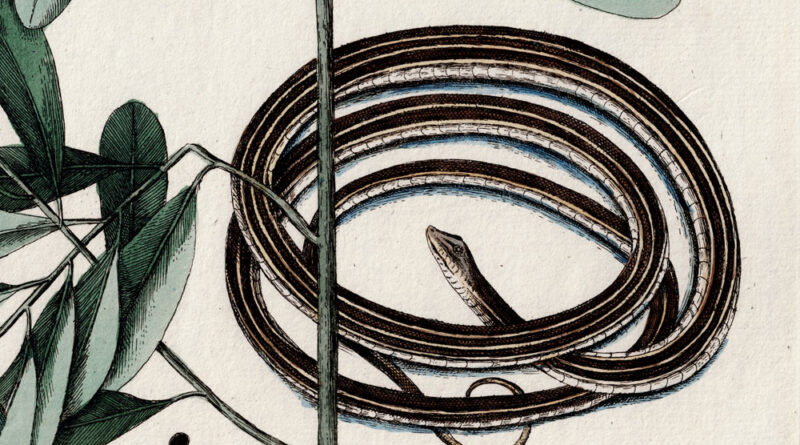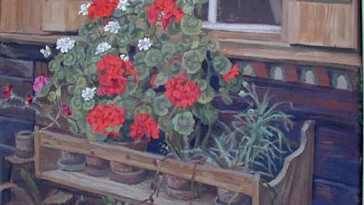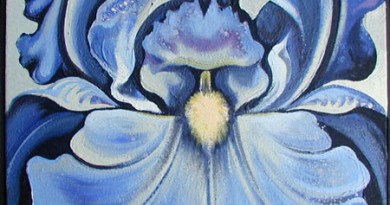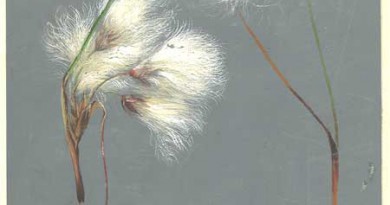Mark Catesby – The Ribbon Snake and Winter’s Bark
Anguis Gracilis Fuscus: The Ribbon-Snake
18th Century Copperlate Engraving by Mark Catesby with original Hand-coloring
“This is a slender Snake, usually not much bigger than the Figure. The Upper Part of the Body dark brown, with three parallel white Lines, extending the whole Length of the Body; the Belly white. They are very nimble and inoffensive.”
Arbor baccifera, laurifolia, aromatica, fructu viridi calyculato racemoso: Winter’s Bark.

1747
March, 24, 1683 (Castle Hedingham, Essex) – December 23, 1749 (London)
Sizes vary slightly, but each measures around 39 X 54 cm
These extraordinary engravings come from the first published account of the wildlife of North America which was published in the middle of the 18th Century –before the American revolution –by the pioneering British natural historian Mark Catesby.
Mark Catesby was born in Essex, England on April 3, 1683. He studied Natural History in London, but in 1712 he took up the opportunity to visit the American colonies after his sister married Dr. William Cocke of Williamsburg, Virginia. Catesby spent the next seven years in Virginia, observing and sketching the local flora and fauna. It took some 20 years for the artist and naturalist to put together the two-hundred and twenty images which would comprise the final version of The Natural History of Florida, Carolina and the Bahama Islands (1747). All of the images in the book were both drawn and engraved by Catesby’s own hand.
Reference: University of Virginia On-Line Version of Catesby’s Natural History





